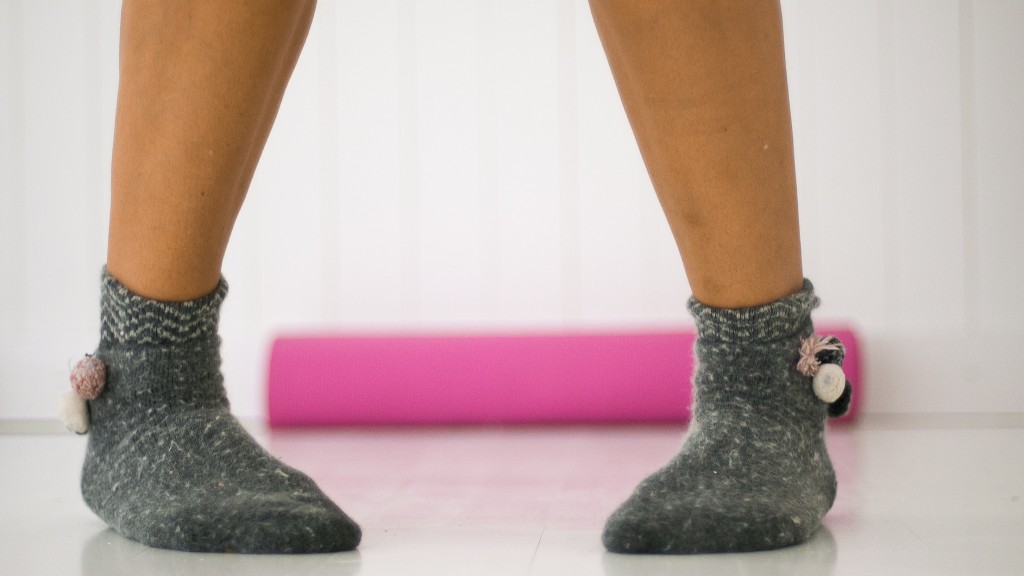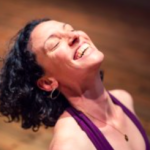You know those pelvic floor exercises that you’re supposed to do whenever you remember? Word is, there’s a better way to care for your pelvic floor. Movement For Modern Life’s fabulous Mollie McClelland Morris lets us in on how.
In certain yoga traditions, there is emphasis on the practice of mula bandha, and contraction of the pelvic floor. There is also a lot of people in the world who suggest “clench and squeeze” as a way to strengthen the pelvic floor.
The pelvic floor – or any muscle in the body for that matter – does not work its best when it is constantly tightened. In fact it can cause reduced blood flow and a host of other issues if the pelvic floor is constantly tightened. (A really interesting book on this is “Teach us to Sit still” by Tim Parks).
One of the most important “exercises” for developing strength, coordination and proper engagement of the pelvic floor is deep, conscious breath in good postural alignment. It happens to also be a great exercise for the abdominal muscle wall, and a way to heal after pregnancy, birth, surgery, illness or long term sedentary lifestyle.
Deep Conscious Breath Supports Your Pelvic Floor
When you breathe in, the diaphragm shortens and flattens down, pulling air into the lungs. The lungs and diaphragm push down on the abdomen and the abdominal organs, which “stretches” the rectus abdominus. When you breathe out, the Rectus abdominus contract and the diaphragm “relaxes” back to its original position. This relationship is called an agonist/antagonist relationship.
What happens when you breathe slowly? It is similar to what happens if you are holding a heavy book and you want to put it quietly down on a table. (Try it) The bicep muscles are lengthening, but they don’t just relax (if they did, the book would drop very forcefully). This type of contraction is called an eccentric contraction. It happens to be a very powerful way to strengthen muscle tissue, in movement and coordination with the other muscle groups around. In fact with inhale the abdominal muscles do an eccentric contraction, and on exhale they do a concentric contraction. So each in breath and outbreath “works” the abdominal muscles in a healthy way, and in concert with all the other muscle groups around.
Sit-ups are concentric contractions of the abdominal muscle wall. There is nothing “wrong” with doing sit ups. They just tighten the muscle tissue in a particular way, though not in movement.
Are You With Me?
Guess which are some of those other muscle groups working with the abdominal muscles? You got it! The pelvic floor. The pelvic floor is a diaphragm that mirrors the movement of the respiratory diaphragm. When you breathe in pressure increases, the pelvic floor moves down. When you breathe out, the pressure is slowly released, and the pelvic floor moves up.
So each deep breath, much in the way the abdominals are getting a work out, is helping heal and tone the pelvic floor. Strength is coming in a dynamic and coordinated fashion, which is much more useful to the body. The muscle is learning how to be toned in every position, not just tight in one position.
Furthermore, when muscles become chronically tight, they lose sensitivity, oxygenation. In a way, a muscle that is already active or tightened is not useful to the body – it is already working so it can’t turn on when needed. So a clenched pelvic floor is likely to cause more problems than it fixes.
But I Have Been Taught To Use Mula Bandha In My Practice
Mula bandha is a very powerful aspect of asana practice. However it may be that your understanding of mula bandha is incomplete, and it could work better for you.
Because we stand upright, the pelvic floor is the base of the body, and is giving tone and support to all of our organs in the abdominal cavity. This is a huge job. So the pelvic floor is a bit like a trampoline.
It is helping to negotiate weight transfer, force absorption, pelvic movement, leg movement, and breath control. It needs to be strong in every possible position to do all of these jobs. When you bend your knees to jump, the pelvic floor is lengthening. If it was loosening, you would have a problem, as the weight of the organs would cause it to sag.
When the pelvic floor is functioning optimally, this lengthening or eccentric contraction still has strength and integrity and holds all the organs in place. You could think of that tone as mula bandha.
When you lift up into crow pose, you need to hold the body compactly. In this pose, mula bandha is helping keep you in this compact position. This is the concentric contraction, or shortened contraction.
Mula bandha, in a way, is not something you do. It is something you become aware of. As your practice and your internal sensitivity deepens, you become aware of how the pelvic floor effects all your movements, how it directs energy and forces through the body, and how you can play with the tone that you give the pelvic floor in order to achieve challenging poses.
A Breathing Practice For The Pelvic Floor
The best way to do this is sitting, on a support like a block, bolster or folded blanket.
First feel the movement of the respiratory diaphragm. When you breathe in it moves down, when you breath out it moves up. Mirror this movement with your hands so you really get a sense of it.
Then do the same movement with the pelvic floor. You can put one hand at the level of your ribs and the other at the level of your pelvis and move them down as you breathe in and up as you breathe out.
Slow your breathing down to a comfortable, even breath pattern. When you feel in tune with the movement, let your hands rest. Keep your awareness on feeling the movement internally.
You can do this as long as you like. 1-5 minutes would be great.
Want To Learn More?
>>Watch Mollie’s Video for Pelvic Floor Awakening Here!>>
Mollie is a co-owner and Director of Sādhaka Yoga Centre in London, UK, a thriving studio that was recently closed (temporarily) by a fire. As creator and lead teacher of Grace and Presence Yoga Teacher Training and mentoring courses and workshops for Yoga Teachers, she helps others to refine their practice, and find their voice as teachers of yoga.
You can check out Mollie’s website here.







Leave a Reply